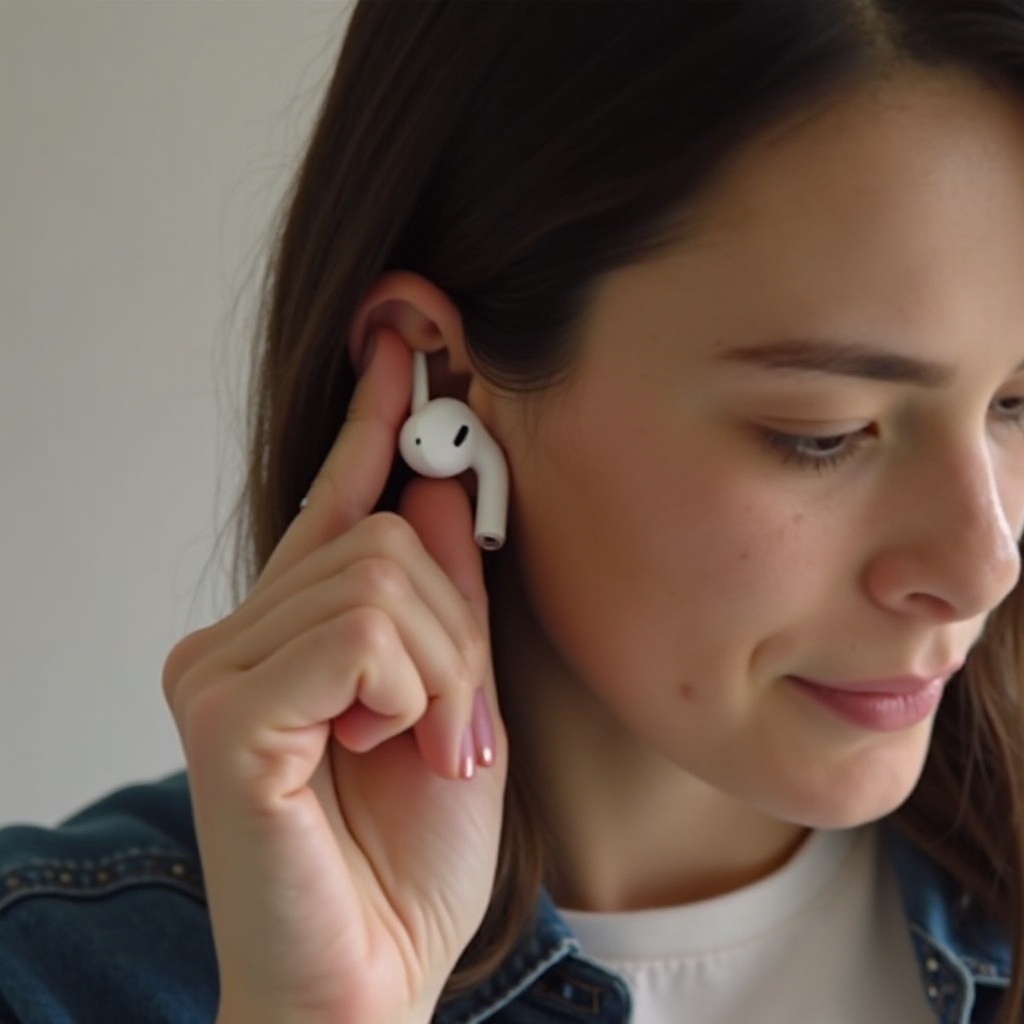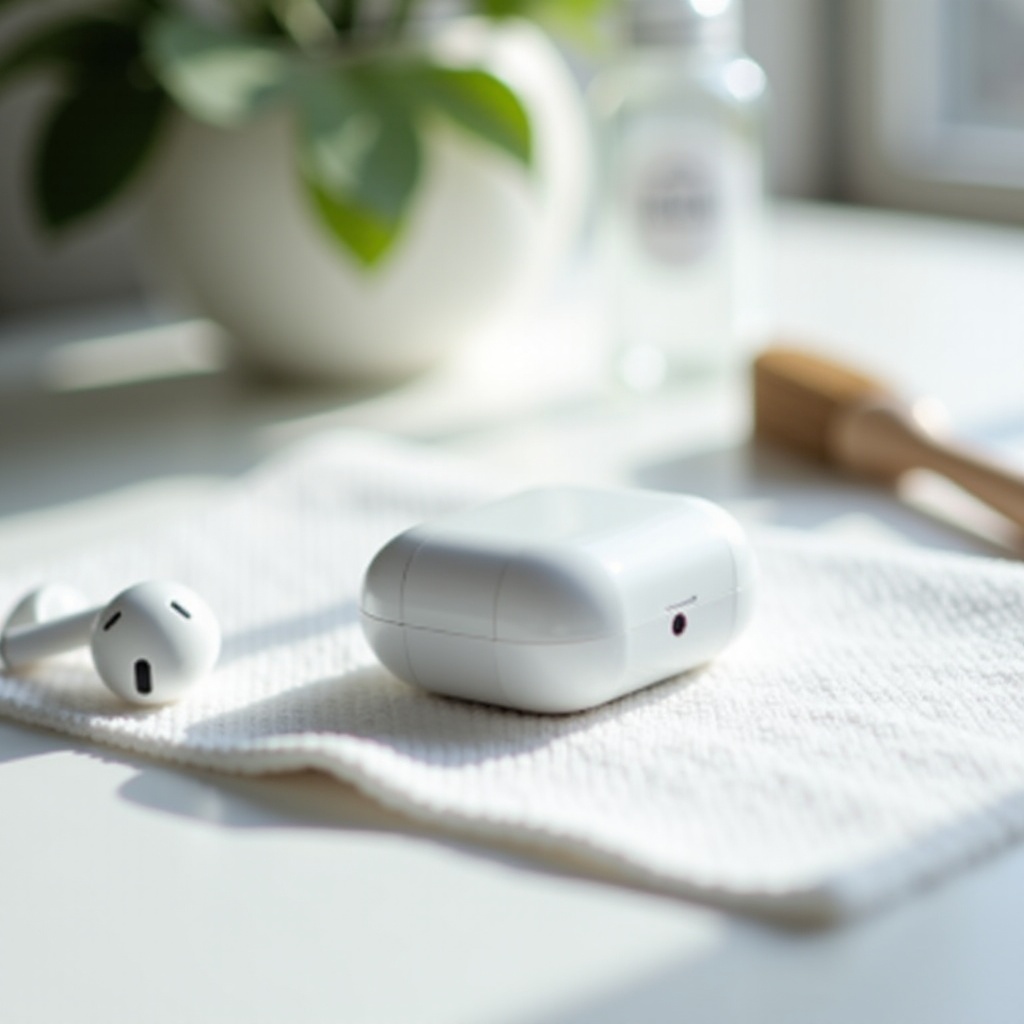Introduction
As an AirPods user, enhancing the audio output to experience every note and beat at its best can vastly improve your listening pleasure. Although AirPods are praised for their sound quality, many seek methods to make them sound even louder without sacrificing audio integrity. Techniques such as adjusting device settings, ensuring a perfect fit, and using specialized tools can play a pivotal role. This article delves into both simple tweaks and advanced measures, ensuring you get the most out of your AirPods.

Understanding AirPods Volume Capabilities
The sound output of AirPods is intricately linked to their design and technological capabilities, which can vary between different models. Recognizing these capabilities is key to optimizing performance. Since AirPods’ volume is influenced by both their connection device and internal settings, maximizing them involves mindful adjustments. Configuring these settings ensures your listening experience is both elevating and secure, safeguarding your device against potential damage.
Optimizing Device and iOS Settings
To achieve a louder sound output, start by fine-tuning your device’s settings. These adjustments can make a noticeable difference.
Adjusting Overall Volume Settings
- Device Volume: Ensure your device is set to maximum volume using either side buttons or the control center.
- App Settings: Some applications have independent volume controls. Check these settings to ensure an optimal audio output.
Configuring Volume Limit and EQ
Apple devices feature built-in volume limitations for hearing preservation. Navigate through Settings > Music > Volume Limit to adjust as needed. Additionally, explore EQ settings by visiting Settings > Music > EQ, which can significantly boost perceived volume.
Leveraging Sound Check and Accessibility Features
Sound Check normalizes audio levels across media, available at Settings > Music. For further amplification, consider Accessibility features like Headphone Accommodations, enhancing volume by tailoring frequencies to personal hearing requirements.
Ensuring a Proper Fit and Seal
Achieving the best sound output significantly hinges on a snug fit which is crucial for sound quality and isolation.
Finding the Right AirPods Tips
For AirPods Pro users, utilizing the right ear tip size is essential. A correct fit enhances both sound quality and comfort.
Achieving the Best Seal for Sound Isolation
To prevent sound leakage and reinforce bass, ensure your AirPods are inserted securely. This technique offers a deeper, richer audio experience.
Testing Fit with Apple’s Ear Tip Fit Test
Use the Air Tip Fit Test available on your iPhone (for AirPods Pro) to check for optimal seal, crucial for the best sound output.

Regular Maintenance and Cleaning
Maintaining your AirPods involves regular cleaning to ensure unobstructed and high-quality sound.
Recognizing the Impact of Debris on Sound Quality
Accumulated debris like ear wax can diminish sound output. Routinely inspecting your AirPods helps identify and resolve such blockages promptly.
Proper Techniques for Cleaning AirPods
Clean speaker meshes and microphones with a dry cotton swab or lint-free cloth. Avoid using liquids or sharp instruments that might damage your AirPods.
Ensuring a Long-term Maintenance Routine
Incorporating a weekly cleaning routine is pivotal. It helps retain optimal sound quality and prolongs your AirPods’ life.

Using External Audio Enhancement Tools
Beyond fundamental adjustments, external audio enhancement tools can further refine your AirPods’ sound.
Safe Integration of Audio Booster Apps
When installing volume-boosting apps, ensure they are reliable and won’t harm your AirPods or mobile device.
Recommended Apps for Boosting Sound
Consider apps like Boom 3D and advanced equalizers, which allow beyond-standard sound modifications. Always verify compatibility and customer reviews before installation.
Monitoring for Audio Distortion
Monitor your audio output when using booster apps. Excessive volume increase may cause sound distortion, impacting overall quality and potentially damaging the AirPods’ hardware.
Troubleshooting Common Issues
Fixing routine issues can effectively restore your AirPods’ sound performance.
Checking for Software and Firmware Updates
Regularly update your AirPods and device firmware to the latest versions. Updates often bring enhancements that could improve volume and stability.
Resetting AirPods for Performance Improvement
If volume issues persist, consider resetting your AirPods by disconnecting and holding the setup button until it cycles back to its default state.
When to Reach Out for Technical Support
Persistent issues may require professional assistance. Contact Apple Support for comprehensive troubleshooting and resolution options when self-help measures fail.
Conclusion
Boosting AirPods volume is a multifaceted task that requires adjusting settings, ensuring a proper seal, maintaining cleanliness, and potentially using external tools. By implementing these strategies, you can enhance your AirPods’ audio output safely and effectively, all while sustaining their quality and longevity.
Frequently Asked Questions
Why is my AirPods volume so low even at max settings?
Low volume can be due to debris, improper fit, or software settings. Regular cleaning, securing a tight seal, and verifying settings can solve this issue.
Do AirPods Pro support better volume control than standard AirPods?
Yes, AirPods Pro offer features like active noise cancellation and customizable ear tips, providing superior sound isolation and volume control options compared to standard AirPods.
Can using third-party apps damage my AirPods?
While third-party apps can enhance audio levels, improper use may cause distortion or damage. Use reputable apps cautiously to minimize risks.